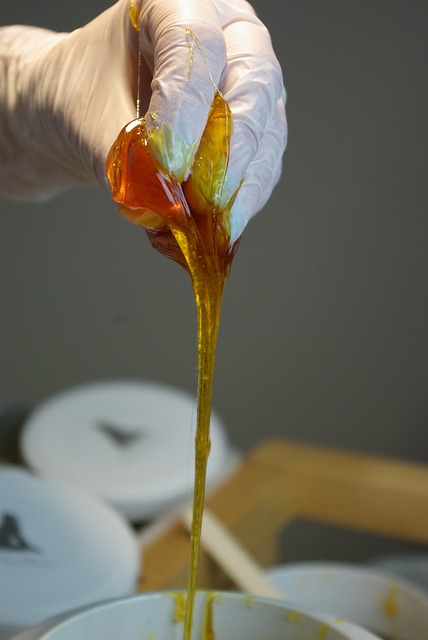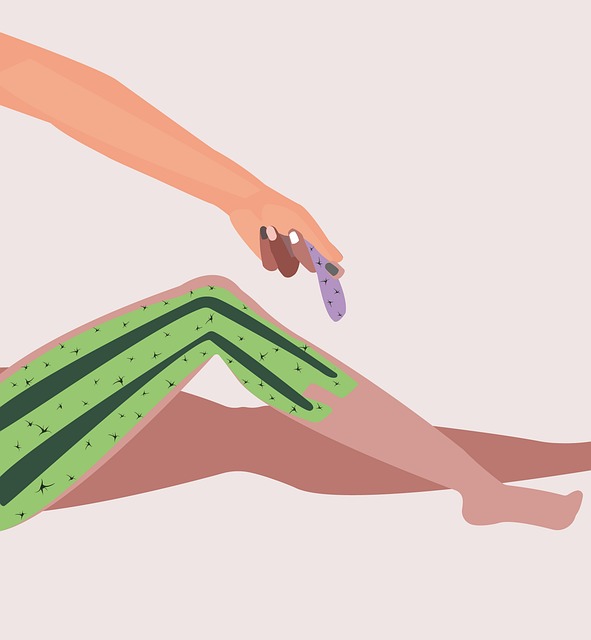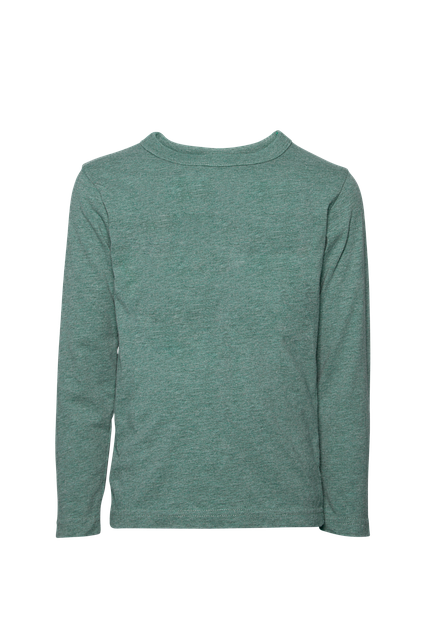Understanding upholstery fabrics and stains is key for successful removal. Identify fabric types and stain severity before choosing a cleaning method. Blotting is initial step to absorb excess liquid, followed by spot testing cleaning solutions. Different stains require specific treatments, with pre-treating for stubborn cases. Direct approach for fresh stains, systematic method for older ones. Proper drying, ventilation, and regular maintenance prevent future stains.
“Upholstered furniture is a staple in any home, but keeping it stain-free can be challenging. Effective stain removal requires understanding your fabric and choosing the right tools. This comprehensive guide navigates the process step-by-step, from identifying different upholstery fabrics and common stains to applying cleaning solutions with precision. Learn essential techniques for blottings, testing, and application to tackle new and stubborn stains alike. Discover prevention tips for regular maintenance, ensuring your furniture stays pristine.”
Understanding Upholstery Fabric Types and Stains

Upholstery fabrics come in a wide variety, each with unique properties and care requirements. Understanding your fabric type is crucial for effective stain removal. Common upholstery materials include cotton, linen, wool, leather, and synthetic blends. Cotton and linen absorb stains easily, requiring swift action to prevent them from setting. Wool and leather, while more durable, need gentle handling due to their sensitive nature. Synthetic blends often require specific cleaning solutions to avoid damaging the fibers.
Stains can be categorized as either surface or deep. Surface stains, like spills or dust, sit on the fabric’s exterior. These are typically easier to remove with common household cleaners or specialized stain removal products. Deep stains, such as those from ink or pet accidents, penetrate deeper into the fabric, making them more challenging. Identifying the type of stain and the upholstery material is key to selecting the right cleaning method for effective stain removal.
Preparation: Assessing the Stain and Gathering Supplies

Before tackling any stain removal process, understanding the nature of the stain is key. Start by assessing the type and severity of the stain on your upholstery. Common household spills like coffee, tea, or grape juice can often be treated with basic cleaning solutions. However, for older or more stubborn stains, professional cleaning might be required. Check the fabric’s care label to ensure suitable cleaning methods.
Gather essential supplies based on your assessment: cleaning agents, sponges or cloths, and possibly a hairdryer for faster drying. For delicate fabrics, opt for mild cleaning agents and test them first in an inconspicuous area to avoid any potential damage or color fading. Having the right tools and knowledge is crucial for effective stain removal, ensuring your upholstery looks good as new.
Blotting: The Initial Step in Stain Removal

Blotting is the first step in effective stain removal for upholstery. It’s crucial to act swiftly when a spill or stain occurs, and blotting plays a key role in this initial response. The goal is to absorb as much of the liquid or solid material as possible without spreading it further into the fabric fibers. Start by gently pressing a clean, absorbent cloth against the stain. Apply gentle, even pressure to draw out excess liquid. Avoid rubbing, which can push the stain deeper into the upholstery.
This careful blotting process is essential for Stain Removal, as it prevents the stain from setting permanently. By removing as much of the spillage as possible at this stage, you significantly increase your chances of achieving a clean and restored Upholstery.
Choosing the Right Cleaning Solution for Different Stains

When it comes to stain removal for upholstery, selecting the appropriate cleaning solution is key. Different stains require specific treatments to ensure effective removal without damaging the fabric. For example, oil-based stains often call for a solvent-based cleaner, while wine or coffee stains may respond better to an enzyme-based formula. It’s important to check the care label on your upholstery first, as some fabrics have specific cleaning instructions.
For best results, consider using a pre-treating stain remover before deep cleaning. These products can loosen and break down stains, making them easier to remove. Once the stain is treated, choose a suitable cleaner – whether it’s a commercial product or a homemade solution of warm water, mild detergent, and white vinegar – based on the fabric type and the stubbornness of the stain. Regular maintenance and prompt stain removal are crucial in keeping your upholstery looking its best.
Testing Cleaning Solutions on a Discreet Area First

Before applying any cleaning solution to your upholstery, it’s crucial to test it on a discreet area first. This step is essential for effective stain removal and protecting your furniture’s fabric. Start by gently dabbing a small amount of the cleaning solution onto an inconspicuous spot, such as the inside seam or a hidden corner. Wait 15-20 minutes to observe if any discoloration or damage occurs. If the area remains unchanged, you can proceed with confidence, knowing that the solution is safe for the upholstery.
Testing first allows you to identify potential issues and choose the most suitable cleaning method. Different fabrics have varying sensitivities, so taking this precautionary step ensures you don’t accidentally damage or fade the colors of your furniture.
Application Techniques for Effective Stain Removal

When it comes to stain removal for upholstery, understanding different application techniques is key. For smaller, fresh stains, a direct approach works best. This involves quickly blotting or dabbing at the stain with a clean, absorbent cloth or paper towel to prevent it from setting into the fabric fibres. Using a small amount of mild detergent or specialised stain remover, gently rub the soiled area in circular motions. Rinse thoroughly with warm water and repeat if necessary.
For tougher, older stains, a more systematic approach is required. Pre-treat the stain with a suitable product designed for upholstery care. Let it sit for a few minutes to allow penetration, then gently scrub using a soft-bristled brush or a clean cloth. Avoid rubbing too hard to prevent damaging the fabric. Finally, vacuum or brush off any residual treatment and inspect the area to ensure the stain has been effectively removed.
Dealing with Persistent or Old Upholstery Stains

When dealing with persistent or old upholstery stains, a systematic approach is key for effective stain removal. Begin by identifying the type of stain and its cause—be it from food, drink, pet accidents, or everyday wear and tear. Different stains require specific treatment methods, so understanding their nature is crucial. For instance, enzymatic cleaners are ideal for organic stains like coffee or wine, while solvent-based products might be more suitable for older, set-in stains.
Pre-treating the stain with the appropriate product before deep cleaning can make a significant difference. Let the pre-treatment sit for several minutes to loosen the stain, then blot gently using a clean cloth or sponge. Avoid rubbing, as it can spread the stain further into the fabric. For stubborn cases, professional cleaners might suggest steam cleaning or specialized equipment to thoroughly clean and refresh the upholstery, eliminating even old and persistent stains.
Drying and Ventilating the Upholstery After Cleaning

After successfully removing stains from upholstery, proper drying and ventilation are crucial steps in the cleaning process. Allow the treated areas to air dry completely to prevent moisture buildup, which can lead to mold or mildew growth. Ensure the room is well-ventilated by opening windows or using fans to accelerate the drying process. Proper ventilation not only helps in evaporating any residual water but also ensures that the upholstery dries evenly, reducing the risk of discoloration or damage.
Proper drying and ventilation are essential for maintaining the integrity and appearance of your upholstery. This final step in stain removal ensures that no trace of moisture remains, leaving your furniture looking as good as new.
Regular Maintenance Tips to Prevent Future Stains

Regular maintenance is key in preventing future stains on upholstery. Start by vacuuming your furniture regularly to remove loose dirt and debris that can lead to staining. Additionally, use a dry cloth to wipe down surfaces frequently, as this can catch spills before they set in.
For an extra layer of protection, consider applying a fabric protector spray designed for upholstery. These products create a barrier between the fabric and liquids, making it easier to clean potential stains. Remember, proactive care is always better than reactive cleaning, so integrating these simple steps into your routine will save you time and effort in the long run when it comes to stain removal.
